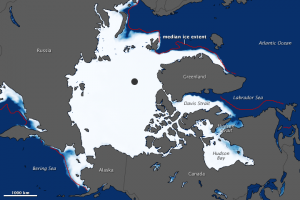This is part two of a two-part series by Eban Goodstein on Tea Party ideology and what it implies for climate stabilization efforts.
Part one: Tea Party to Planet: Checkmate?
Climate stabilization, if we got started today, would not be an economic or technical challenge. Recent research, including by co-authors and myself, has added to the strong evidence that we could get most of the way there simply by scaling up existing low carbon technologies, at moderate investment cost. The challenge is time: thanks to the Tea Party, we will not start cutting emissions for another 5 years at the least. An orderly, “politics as usual” transition towards 450 ppm slipped away in 2010.
What now? We have to drive the US political system towards an emissions reduction trajectory as aggressive as possible, with the hope that our kids will discover sequestration technologies that can dial the planet back towards 350 ppm. And also with the recognition that no one can tell the future. Climate crises in the 2010’s and 20’s may spur global, WWII-style mobilization in support of a clean energy future, targeting sustainable C02 levels. Australia illustrates how the experience of massive flooding and extended drought can begin to alter the political landscape.
To support this vision, the Clean Energy movement has a winning story. The future is about economic revitalization, jobs, national security, rural development, energy independence, community empowerment, technological savvy, environmental security, clean air for our kids, and climate stabilization. The trick will be to build more and more economic and political power behind the story, faster and faster. (more…)


